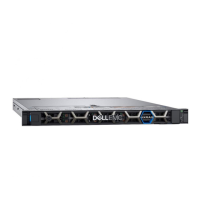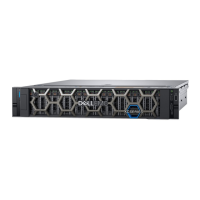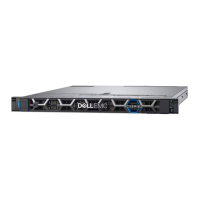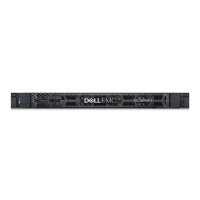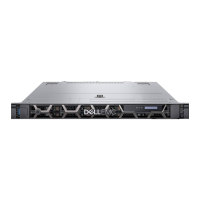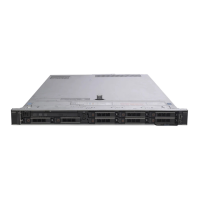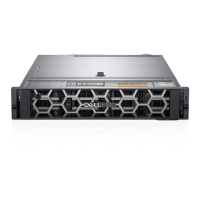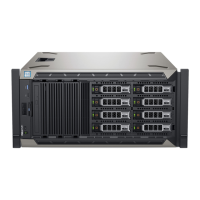Do you have a question about the Dell EMC VxFlex Ready Node and is the answer not in the manual?
Lists related Dell EMC publication sets for VxFlex OS and VxFlex Ready Node.
Explains text style conventions used in the document for interface elements, titles, and code.
Provides information on obtaining Dell EMC support, product details, and technical assistance.
Introduces VxFlex Ready Node, covering its definition and system requirements.
Explains the VxFlex Ready Node architecture, including system components, storage, networking, and performance.
Details how to access the VxFlex OS GUI, log in, and manage connection status.
Describes the features and functionalities of the VxFlex OS Graphical User Interface (GUI), including views and controls.
Provides an overview of tasks to enhance VxFlex OS performance, including system changes, optimization, and tuning.
Covers managing system objects using CLI basics, cluster operations, SDS/SDC operations, and ESX server management.
Details security management aspects, including certificates, user credentials, login banners, and MDM/LDAP integration.
Explains how to monitor the system using the VxFlex OS GUI, focusing on object properties, hardware details, and logs.
Details system configuration tasks using the VxFlex OS GUI, including capacity, cache, volumes, and network settings.
Describes common tasks like associating volumes, port usage, Java upgrades, VMware integration, and hardware updates.
Explains system events and alerts, including event formats, viewing events, and detailed event lists.
Covers SNMP trap support, including general information, alert conventions, and SNMP configuration.
Details server factory reset procedures, iDRAC console access, and power operations for VxFlex Ready Node servers.
Provides information on using the DTK and Hardware ISO to update drivers, BIOS, and firmware on VxFlex Ready Node servers.
Random access electronic storage used to retain frequently used data for faster access by the channel, critical for storage performance.
VxFlex OS control by a cluster of MDM nodes, minimally consisting of Master MDM, Slave MDM, and Tie Breaker.
Logical entity ensuring SDS data backup on SDSs, preventing double-point-of-failure scenarios.
Directory service protocol used by MDM to communicate with Active Directory for authentication.
Storage Data Client, a lightweight driver exposing VxFlex OS volumes as block devices to applications.
Storage Data Server, managing server capacity and acting as a back end for data access.
Optimizes space utilization by allocating storage flexibly, operating by allocating disk space among users.
A small window that floats on your screen, allowing visual monitoring of the system.
Lists related Dell EMC publication sets for VxFlex OS and VxFlex Ready Node.
Explains text style conventions used in the document for interface elements, titles, and code.
Provides information on obtaining Dell EMC support, product details, and technical assistance.
Introduces VxFlex Ready Node, covering its definition and system requirements.
Explains the VxFlex Ready Node architecture, including system components, storage, networking, and performance.
Details how to access the VxFlex OS GUI, log in, and manage connection status.
Describes the features and functionalities of the VxFlex OS Graphical User Interface (GUI), including views and controls.
Provides an overview of tasks to enhance VxFlex OS performance, including system changes, optimization, and tuning.
Covers managing system objects using CLI basics, cluster operations, SDS/SDC operations, and ESX server management.
Details security management aspects, including certificates, user credentials, login banners, and MDM/LDAP integration.
Explains how to monitor the system using the VxFlex OS GUI, focusing on object properties, hardware details, and logs.
Details system configuration tasks using the VxFlex OS GUI, including capacity, cache, volumes, and network settings.
Describes common tasks like associating volumes, port usage, Java upgrades, VMware integration, and hardware updates.
Explains system events and alerts, including event formats, viewing events, and detailed event lists.
Covers SNMP trap support, including general information, alert conventions, and SNMP configuration.
Details server factory reset procedures, iDRAC console access, and power operations for VxFlex Ready Node servers.
Provides information on using the DTK and Hardware ISO to update drivers, BIOS, and firmware on VxFlex Ready Node servers.
Random access electronic storage used to retain frequently used data for faster access by the channel, critical for storage performance.
VxFlex OS control by a cluster of MDM nodes, minimally consisting of Master MDM, Slave MDM, and Tie Breaker.
Logical entity ensuring SDS data backup on SDSs, preventing double-point-of-failure scenarios.
Directory service protocol used by MDM to communicate with Active Directory for authentication.
Storage Data Client, a lightweight driver exposing VxFlex OS volumes as block devices to applications.
Storage Data Server, managing server capacity and acting as a back end for data access.
Optimizes space utilization by allocating storage flexibly, operating by allocating disk space among users.
A small window that floats on your screen, allowing visual monitoring of the system.
| Manufacturer | Dell EMC |
|---|---|
| Product Line | VxFlex Ready Node |
| Category | Server |
| Form Factor | Rack-mounted |
| Processor | Intel Xeon Scalable |
| Memory | Up to 3 TB DDR4 |
| Storage | SSD, HDD |
| Networking | 10GbE, 25GbE, 40GbE, 100GbE options |
| Operating System Support | VMware ESXi |




